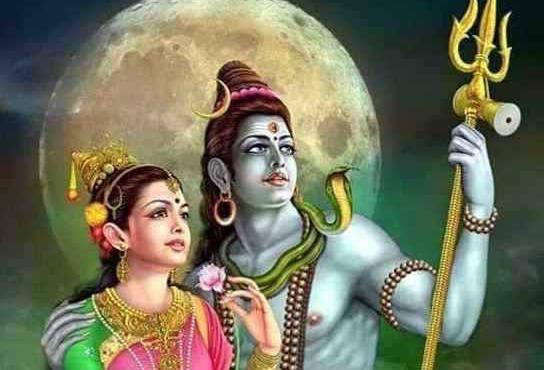Maha Shivaratri 2023 : Know the Date, Puja Rituals & Time and benefits of fasting on Shivaratri
Maha Shivaratri is amongst the major and most prominent in India. On the blessed day of Maha Shivaratri, Hindus worship Lord Shiva. As per the Hindu calendar, it is purportedly celebrated annually on the fourteenth day of each lunar month, which corresponds to the day before the Full Moon. Moreover, many devotees celebrate this day as the marriage of Shiva and Parvati. Maha Shivaratri 2023 will occur in February as per the Gregorian calendar.
Maha Shivaratri 2023: Date, time & tithi
2023 Maha Shivaratri is on February 18, 2023. On this day, people worship Lord Shiva and conduct puja following the Muhurat. Early morning visitors to the temple include those who are fasting that day.
The Chaturdashi tithi will start at 08:02 PM on February 18 and end at 04:18 PM on February 19. The Nishitha Kaal puja timing is from 12:16 AM to 01:06 AM on February 19, 2023. The Shivratri Paran timings are from 06:57 AM to 03:33 PM on February 19, 2023.
Natives must remember to perform puja and needful rituals at the Nishita Kaal or once each of the prahars (Four prahars, each lasts for about 3 hours). However, you must fast for 12 hours at night.
First Prahar Puja Timing: 06:13 PM to 11:24 PM, February 18
Second Prahar Puja Timing: 11:24 PM to 12:35 AM, February 19
Third Prahar Puja Timing: 12:35 AM to 03:46 AM, February 19
Fourth Prahar Puja Timing: 03:46 AM to 06:56 AM, February 19
The Muhurat and the prahar timings differ in different parts of the country, and the position of the Moon in different locations.
The mythological story behind Maha Shivratri
The history of the Shivratri festival resides in various myths and traditions in the Puranas. According to one legend, a pot filled with poison rose from the sea at Samudra Manthan. The Gods and demons fled to Lord Shiva for assistance, fearing it might destroy the entire planet. Shiva took the poison and held it in his throat rather than swallowing it to safeguard the planet from its harmful effects. As a result, his throat turns blue, earning him the name Neelakantha. Shivratri is remembered as the occasion when Shiva rescued the world.
Another well-known myth states that Shiva bestowed Goddess Paravati, a manifestation of Shakti and that he desired to wed her because of her devotion. The goddess maintained a fast for his well-being on a moonless night. An Indian woman still does this procedure today to pray for her spouse to live a long life. The anniversary of Lord Shiva and Goddess Parvati commemorates this day.
How to perform Puja on Shivaratri in 2023?
- The Maha Shivratri Puja vidhi involves fasting and worshipping the lord with utmost effort and genuineness.
- A single meal per day is advised before the Maha Shivaratri fast. Making sure that no undigested food remains in the digestive system on the fasting day is one of the activities while fasting.
- You should wake up early on the day of Shivaratri and take a bath.
- Devotees should make a Sankalp after having a bath to fast for the entire day and break their fast the following day.
- During the fast, devotees should refrain from eating anything. Moreover, they should forbid water too during a rigorous fast.
- Before starting the Shiva Puja or visiting a temple in the evening, worshippers should take a second bath.
- You can perform Shivaratri Puja once or four times throughout the evening. To attain four Prahar, you can divide the entire night’s duration into four equal parts and perform Shiva Puja four times.
- Shiva Lingam Abhishek should be completed according to Puja Vidhi using various elements. Common ingredients for Abhishek include milk, rosewater, sandalwood paste, yoghurt, honey, clarified butter, sugar, and water.
- After the Abhishek ceremony, you must keep a garland of Bel Patra leaves around Shivalinga.
- Also, apply sandalwood or Kumkum to the Shivalinga, light a lamp, and then spread the Dhupa smoke.
Benefits of observing fast on Shivaratri
We lose sight of our source of energy, that which drives us, in the everyday flurry of life. Shivaratri is an occasion that encourages us to reflect on and focus on Shiva, the source of all that is. It is the time to rejoice and honour Lord Shiva, to honour life, and to celebrate being.
- On Maha Shivratri, several people spend the day in worship, relaxing spiritually and joyfully.
- Moreover, they celebrate the event by fasting, chanting, meditating, and worshipping the Shivalinga.
- When people fast, they get into detoxification. Moreover, they find a reduction in their mental agitation.
- On Shivratri night, the constellations’ positions become extremely lucky for meditation. Thus, during Shivaratri, individuals must stay up and practise meditation.
- Chanting the Shiva mantra on Shivratri instantly boosts your mood. Its ecstasy and joy turn into balance, compassion, and tranquillity.

